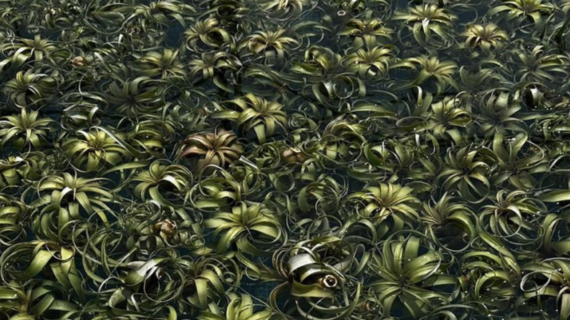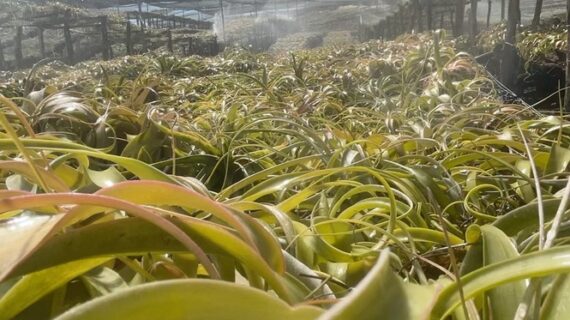
Tillandsias, or air plants, are unique because they don’t require soil to grow. Instead, they absorb water and nutrients directly from the air through their specialized leaf structures called trichomes. This makes ambient humidity a crucial factor in their health and survival. Whether you live in a dry climate or a humid tropical environment, understanding the role of humidity in Tillandsia care is essential. Let’s explore how humidity affects air plants and how you can create the perfect conditions for them.
Why Is Humidity Important for Tillandsias?

Tillandsias originate from a variety of natural habitats, including tropical rainforests, coastal regions, and even arid deserts. In these environments, they rely on the moisture in the air to stay hydrated.
How Tillandsias Absorb Water from Humidity
Tillandsias don’t have traditional roots to take up water. Instead, they use trichomes, tiny hair-like structures on their leaves, to capture moisture from the air. When humidity levels are high, these trichomes absorb water vapor, helping the plant stay hydrated without direct watering.
Ideal Humidity Range for Air Plants
For most Tillandsias, the ideal humidity range is 50-70%. However, different species have adapted to varying moisture levels:
Humid-loving Tillandsias (60-80% humidity):
- Tillandsia Usneoides (Spanish Moss)
- Tillandsia Bulbosa
- Tillandsia Brachycaulos
- Tillandsia Ionantha
Drought-tolerant Tillandsias (40-60% humidity):
- Tillandsia Xerographica
- Tillandsia Streptophylla
- Tillandsia Tectorum
- Tillandsia Harissii
By matching the humidity level to your specific Tillandsia species, you can ensure they get the right amount of moisture.
How Different Humidity Levels Affect Tillandsias
High Humidity Environments (Above 70%)
If you live in a humid climate, such as a tropical or coastal area, your Tillandsias will naturally receive more moisture from the air.
✅ Pros:
- Requires less frequent watering
- Leaves stay plump and hydrated naturally
- Ideal for rainforest species like Tillandsia Usneoides
⚠️ Challenges:
- Too much moisture can cause rot if the plant doesn’t dry properly
- Poor air circulation in humid environments can lead to fungal issues
How to Manage:
- Reduce soaking frequency and rely more on misting
- Ensure good air circulation to prevent excess moisture buildup
- Place plants in areas with indirect sunlight to help with drying
Moderate Humidity Environments (50-70%)
This is the ideal humidity range for most Tillandsia species. If your home naturally falls within this range, your air plants will thrive with a regular watering routine.
✅ Pros:
- Balanced moisture absorption
- Reduced risk of dehydration or rot
- Allows flexibility in watering methods (soaking, misting, or dunking)
⚠️ Challenges:
- May still require adjustments depending on seasonal changes
How to Manage:
- Monitor your plants for signs of dehydration or overwatering
- Adjust your watering frequency based on the season.
Low Humidity Environments (Below 50%)
In dry or desert-like environments, air plants can struggle to get enough moisture from the air alone. Indoor heating and air conditioning can also reduce humidity levels, making it difficult for Tillandsias to stay hydrated.
✅ Pros:
- Less risk of rot due to rapid drying
- Suitable for drought-tolerant species like Tillandsia Xerographica
⚠️ Challenges:
- Increased risk of dehydration and browning leaves
- Requires more frequent watering or misting
How to Manage:
- Increase watering frequency (soak twice a week instead of once)
- Mist your plants more often, especially during dry seasons
- Use a humidity tray (a shallow dish with water and pebbles)
- Consider placing Tillandsias in naturally humid areas like bathrooms or kitchens
Humidity plays a crucial role in the health and hydration of Tillandsias. By understanding your home’s humidity levels and adjusting your watering routine accordingly, you can create the perfect environment for your air plants to thrive.